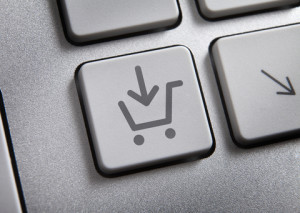
What is Online Merchandising?
Online merchandising describes how you display your products or services on your website. It’s a fundamental task in making sure your website keeps your customers happy and makes you profit. Getting it right means that customers are able to find what they want easily and maybe pick up some additional items along the way. Getting it wrong can mean customers become frustrated with your site and decide to browse your competitors instead.
It’s easy to get in a hurry when you’re starting a new e-commerce website. You want all of your products listed now, and if getting in a hurry makes it easy to overlook important details – especially if you’re not sure what you’re your customers’ needs are.

People love to talk about new shopping sites they found, so it’s important to take your time and make sure that the first experience your customers have with your shop are positive. With the number of websites growing month upon month, and the increase in desire for websites that are easy and interesting to navigate, it’s important to make sure your online merchandising is effective.
Think about your customers
Before you put fingers to keyboard and start mapping out what you want on your website and where, think about your potential customers. Why do you want them to come visit you? What do you want them to do on your site? Why should they browse your site rather than your competitors?
Think about the different types of visitors you will have. Will they come to your site to browse for ideas for a later date? Will they see something in your brick and mortar store, and buy it online when they have more time? Will they want to get in, buy a specific product and get out as fast as they can? Will they want your advice on what to buy? The chances are you’ll have visitors who fit into several of these categories – and maybe more.
Making sure you understand your visitors and why they visit your site will help you decide how to merchandise your site as effectively as possible.
How should I merchandise my products or services?
Online merchandising requires meeting the expectations of different groups of customer visiting your site. Think about the types of browsing options you want to provide, such as:
- Browsing by product type – this is the most obvious option and usually the easiest to structure. For example, clothing sites categorizing by Trousers, Skirts, Jumpers etc.
- Browsing by brand – for relevant companies that sell branded goods this is a good option to include. For example, baby products categorizing by Tommy Tippee, Mamas and Papas, Fisher Price etc.
- Browsing by occasion – for products relevant for specific occasions. For example, clothing sites categorizing by Wedding, Ascot, Black Tie etc or for gift companies categorizing by Christening, Birthday and Anniversaries.
- Browsing by color – useful for companies selling products such as clothing, jewelry, furniture.
- Browsing by the best deals – many customers will buy based on price and giving them the option of browsing by the available deals can increase conversion significantly.
- Browsing by bestsellers – browsers like to be able to see what products sell best to help them find a product that meets their requirements more quickly.
You don’t have to provide every option, but always provide more than one method of browsing your products. Customers like to be able to choose how they view your products, and what works for one customer one day might not work for him the next. Equally, what works for one customer, won’t work for another.
I know what navigation options I want to provide, now what?
Once you’ve established what types of navigation you want to offer to your visitors, you need to add a little more flesh around each of these methods, as well as think about what product information you want to give the customer at what point.
Category Structure
For each of your navigation methods, come up with a category structure. For example, browse by product you might have a top level category of ‘Tops’ and sub categories of ‘Short Sleeve’, ‘Long Sleeve’, ‘Patterned’. Again, make sure you’re thinking what’s likely to be logical to the browser, not to you.
Product Page
Once the customer has reached the product page, it’s important that they have the information they need to make a purchase from you. What information do they want or need for them to decide if this is the right product for their needs. How much is delivery? What are your returns policies and procedures? How big is the item? Does it come in other colors? Are there multi-purchase discounts?
Pictures, pictures, pictures
Your customers can’t touch your product, so learn to take great pictures so they can see your product clearly. By providing multiple views of your product, your customers can make a decision to buy much easier. You can even include pictures of your product being used, to show how it could work for them.
If you want your website to provide a more personal experience, try using pictures of yourself, your staff and even your customers with your products. Just make sure you have their permission.
You can add videos to your products too. Internet users generally don’t have a long attention span, so it’s a good idea to keep the length of your videos to three minutes or less.
I’ve merchandised my products, what else?
You should now have established a solid base for merchandising your products. There are just a few more things you may want to think about:
Cross-selling
It’s always good to recommend additional products where suitable to increase basket size. Think about where is most logical to do this. Is it worth having ‘People who bought this also bought’ on the basket page? Or having items which match the cardigan they’re viewing on the product page?
Up-selling
On the product page or basket page offer products the customer may want to add to their order based on what they’ve purchased. Would you like the batteries for that product? Would you like the matching earrings?
Is that everything?
Once you’ve set up your online merchandising, make sure you review it regularly. Run customer surveys to see what they think. Think about new product ranges or new customer types you may need to cater for.
Be sure to use your own website regularly, as you would if you were a customer. Ask yourself if it’s easy to find your products, and if you would have enough information to make a decision to buy.
There is no one correct way to merchandise your site but keeping your customers’ experience at the front of your mind will help you become a successful online merchant.
